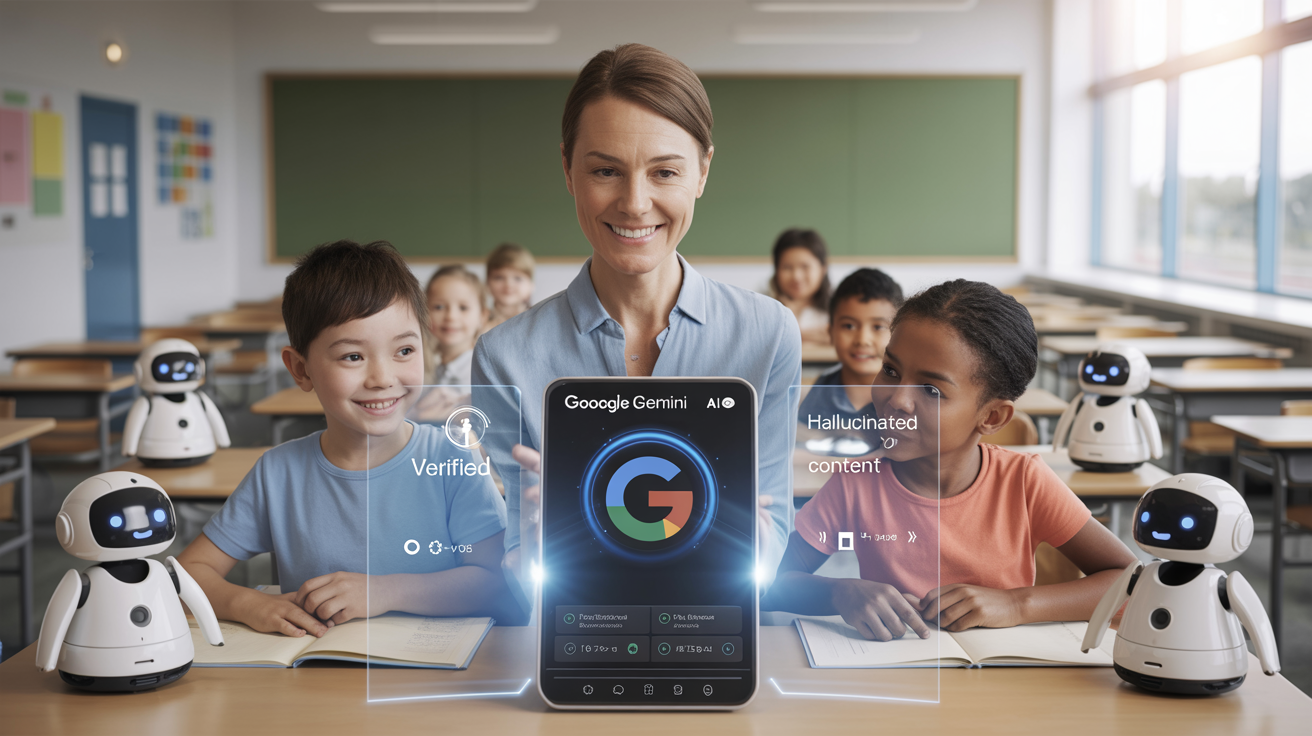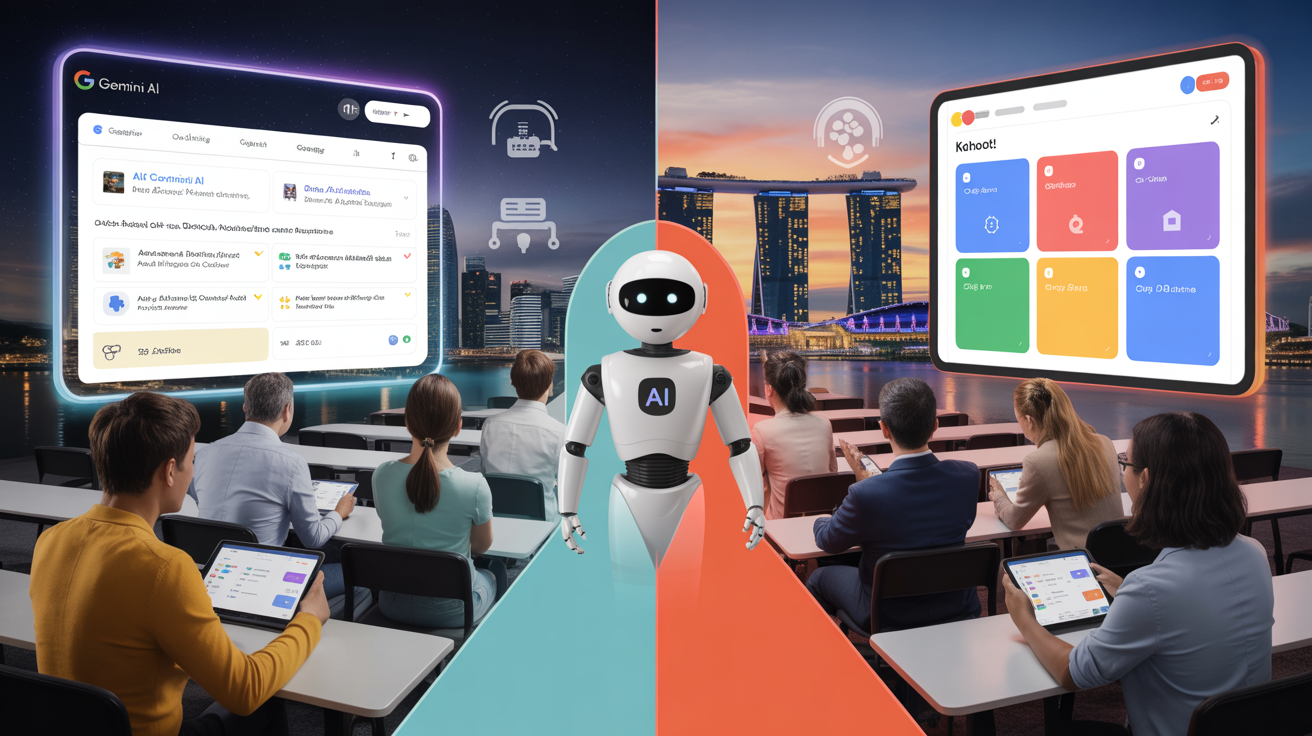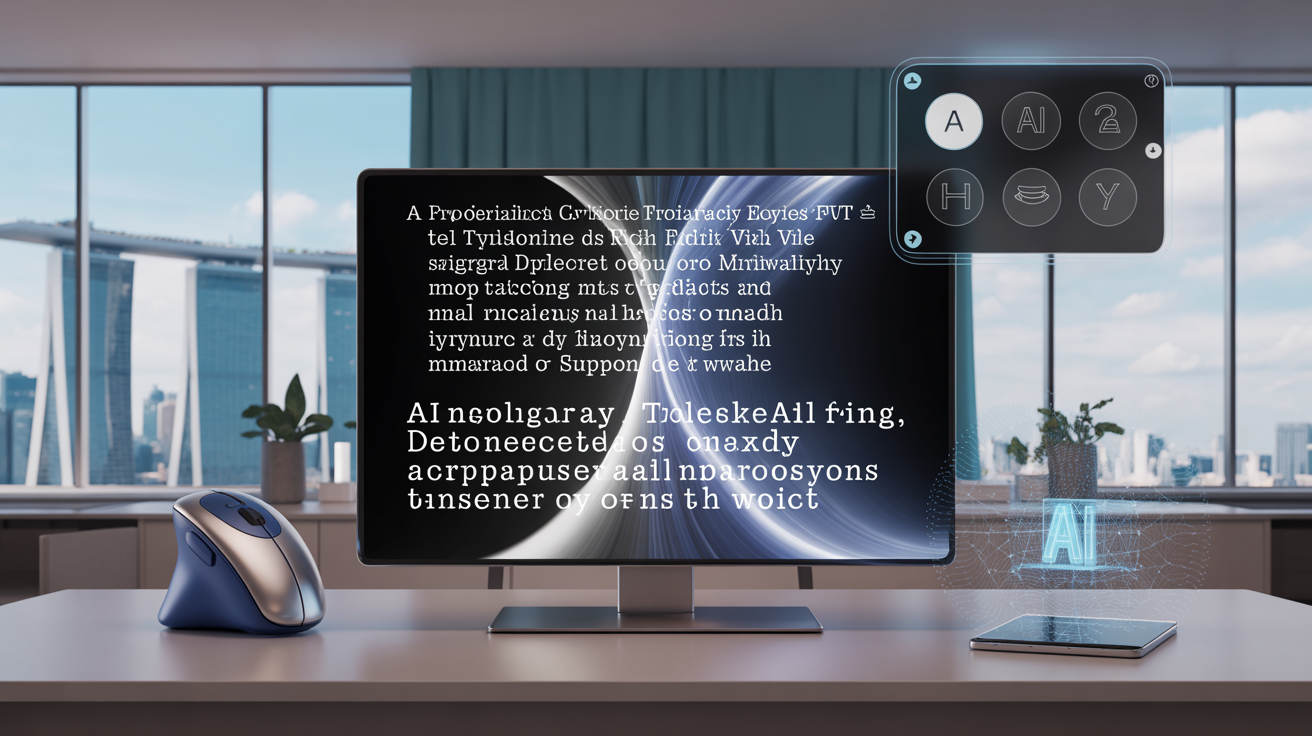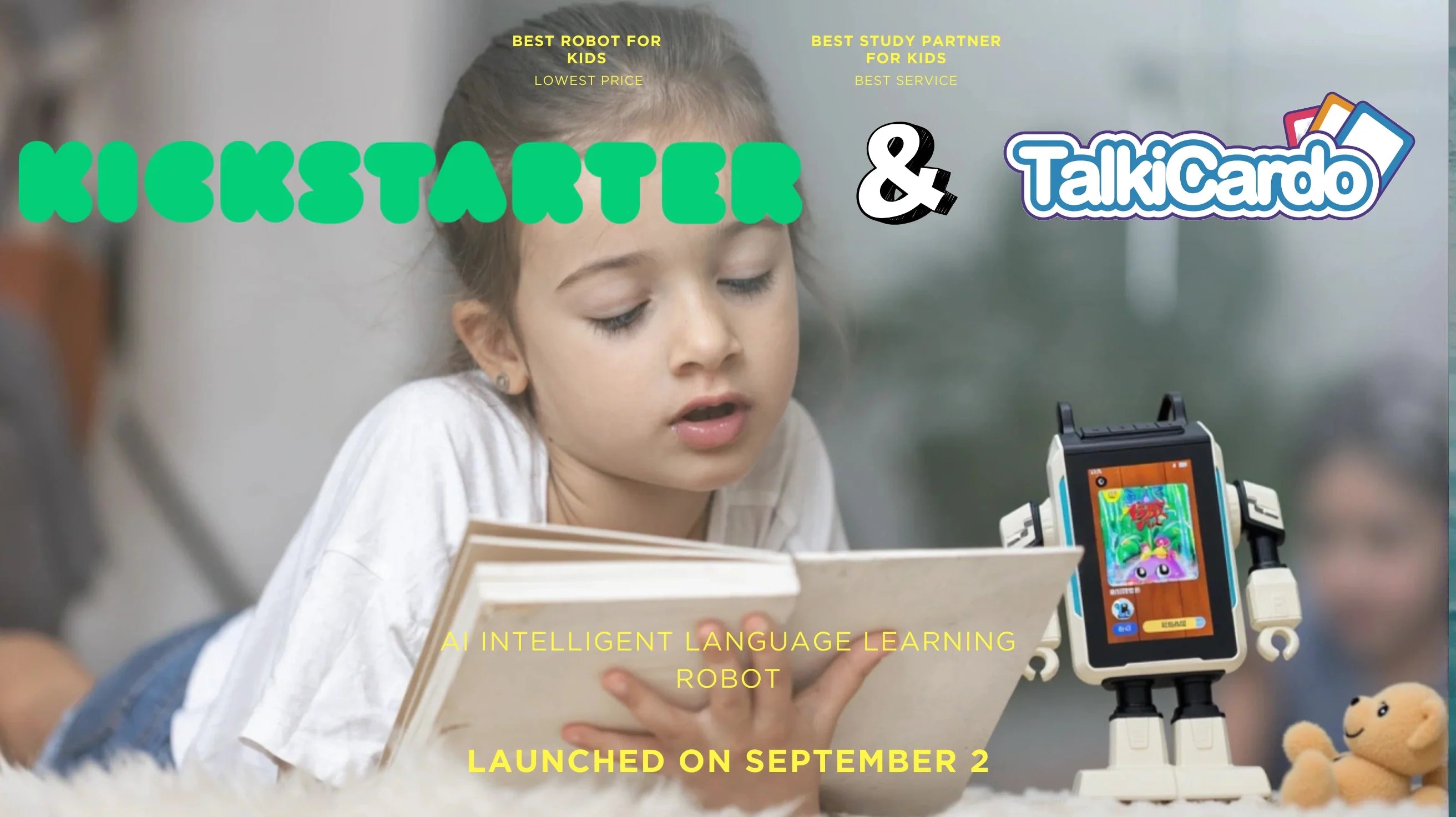
Gemini Safety Guide: Preventing Hallucinations in AI-Generated Class Content
Posted by Aipilot on
Table Of Contents
- Understanding Gemini Hallucinations: What Every Educator Should Know
- The Impact of AI Hallucinations on Educational Content
- 7 Effective Strategies to Prevent Gemini Hallucinations
- Prompt Engineering Techniques for Educators
- Implementing Verification Systems for AI-Generated Content
- Teaching Students About AI Limitations
- How AIPILOT's Educational Tools Minimize Hallucination Risks
- Future Developments in AI Safety for Educational Content
Imagine preparing for tomorrow's history lesson using Google Gemini to generate some engaging content about World War II, only to discover later that it confidently cited a battle that never happened. Or perhaps you're a language teacher who used AI to create practice dialogues, but the AI inexplicably inserted phrases in a language that doesn't exist. These scenarios illustrate what experts call "AI hallucinations" – a challenge that educators increasingly face when incorporating advanced AI tools like Gemini into their teaching practice.
As AI becomes more integrated into educational settings, understanding how to prevent these hallucinations isn't just helpful – it's essential for maintaining educational integrity and student trust. For educators embracing AI-enhanced teaching, knowing how to effectively prompt, verify, and utilize Gemini can make the difference between an innovative learning experience and a problematic one.
In this comprehensive guide, we'll explore practical strategies for preventing Gemini hallucinations in classroom content, understanding why they occur, and implementing systems that ensure AI remains a reliable educational assistant rather than a source of misinformation. Whether you're just beginning to explore AI's potential in education or looking to refine your existing approach, this guide will help you navigate the fascinating but sometimes unpredictable world of generative AI in education.
Preventing AI Hallucinations in Education
Essential strategies for educators using Google Gemini
What Are AI Hallucinations?
AI hallucinations occur when models like Google Gemini generate content that sounds plausible but contains factual inaccuracies, invented information, or nonsensical elements.
- Inventing non-existent events or figures
- Creating fake studies or statistics
- Generating incorrect solutions with convincing explanations
Educational Impact
When AI hallucinations infiltrate educational materials, the consequences extend beyond simple factual errors:
- Student misconceptions that persist long-term
- Undermining educator credibility and trust
- Institutional reputational risks
- Potential impact on critical thinking skills
7 Effective Strategies to Prevent Gemini Hallucinations
1. Use Specific, Constrained Prompts
Narrow the scope and specify information requirements to reduce fabrication.
2. Request Citations and References
Ask Gemini to provide sources for key facts to ground responses in verifiable information.
3. Implement Chain of Verification
Ask Gemini to verify specific claims from its previous responses.
4. Use Domain-Specific Knowledge Checks
Incorporate your expertise into prompts to guide AI away from errors.
5. Break Complex Requests into Components
Verify each part individually to prevent compounding errors.
6. Use Multiple AI Systems as Cross-Checks
Compare outputs from different systems to identify discrepancies.
7. Implement Human-in-the-Loop Verification
Maintain human fact-checking for critical educational content.
Effective Prompt Engineering for Educators
Sample Scaffolded Prompt
"Create a 30-minute lesson plan for 7th-grade science students on forest ecosystems. Include:
1. Three key learning objectives aligned with NGSS standards
2. A 5-minute opening activity
3. 15 minutes of content covering only established scientific concepts about energy flow in forest ecosystems
4. A 10-minute assessment activity
Focus only on information found in standard middle school science textbooks and avoid any speculative or cutting-edge research."
Role Prompting
Ask Gemini to adopt a specific educational perspective:
Uncertainty Prompting
Tell Gemini how to handle uncertain information:
Three-Tier Verification System
Tier 1: Low-Stakes Content
For brainstorming ideas, creative writing prompts, or discussion starters.
- Basic reasonableness check
- Logic and general knowledge alignment
Tier 2: Medium-Stakes Content
For supplementary materials or classroom activities.
- Spot-checking key facts
- Secondary AI verification
- Cross-reference with trusted sources
Tier 3: High-Stakes Content
For authoritative materials, tests, or graded content.
- Comprehensive verification
- Multiple reliable sources
- Expert review
- Stringent fact-checking
Emerging Solutions in AI Education Safety
Retrieval-Augmented Generation (RAG)
Connects AI models to verified external knowledge bases, allowing them to "look up" information rather than generating it from patterns alone.
Self-Consistency Checking
Advanced models are being trained to evaluate their own outputs for logical consistency and factual accuracy.
Uncertainty Quantification
Future AI systems will likely provide confidence scores with their responses, giving educators clear signals about which information might require verification.
Ready to explore AI educational tools with built-in safeguards?
Discover AIPILOT's range of AI-powered educational solutions designed specifically for safe, effective learning experiences.
Explore AIPILOT SolutionsVisit aipilotsg.com to learn more about AI educational tools that maintain the highest standards of content accuracy and safety.
Understanding Gemini Hallucinations: What Every Educator Should Know
AI hallucinations occur when models like Google Gemini generate content that sounds plausible but contains factual inaccuracies, invented information, or nonsensical elements. Unlike human errors, AI hallucinations stem from how these large language models (LLMs) process and generate information.
Think of Gemini as an incredibly sophisticated pattern-matching system rather than a knowledge database. When asked a question, it doesn't retrieve stored facts but generates responses based on statistical patterns learned during training. This fundamental characteristic explains why even advanced AI like Gemini can sometimes produce confident-sounding but entirely fabricated information.
Common examples of Gemini hallucinations in educational settings include:
- Inventing non-existent historical events or figures
- Creating fake scientific studies or statistics
- Generating incorrect mathematical solutions with convincing explanations
- Fabricating literary quotes or misattributing them
- Blending factual information with fictional elements
What makes these hallucinations particularly challenging is that they often appear alongside accurate information and are presented with the same level of confidence, making them difficult to spot without verification.
The Impact of AI Hallucinations on Educational Content
When AI hallucinations infiltrate educational materials, the consequences extend beyond simple factual errors. For students, exposure to hallucinated content can lead to misconceptions that might persist long after the initial exposure. A student who learns an incorrect historical fact or scientific principle may carry that misinformation forward, potentially affecting future learning.
For educators, AI hallucinations pose challenges to professional credibility. Presenting incorrect information generated by AI, even inadvertently, can undermine student trust and confidence in the learning environment. This is particularly concerning in subjects where factual accuracy is paramount, such as science, history, or mathematics.
At an institutional level, reliance on AI-generated content without proper verification systems can pose reputational risks. Schools and educational organizations that embrace AI tools must balance innovation with accuracy to maintain educational standards and integrity.
Perhaps most concerning is the potential impact on critical thinking skills. When students are repeatedly exposed to AI-generated content containing subtle inaccuracies, they may develop either excessive skepticism toward all information or, conversely, an uncritical acceptance of plausible-sounding but incorrect information.
7 Effective Strategies to Prevent Gemini Hallucinations
Preventing hallucinations when using Gemini for educational content requires a multi-faceted approach. Here are seven strategies educators can implement immediately:
1. Use Specific, Constrained Prompts
The more specific your instructions to Gemini, the less room there is for hallucination. Rather than asking "Tell me about photosynthesis," try "Explain the light-dependent reactions of photosynthesis in C3 plants, including only widely accepted scientific facts taught in AP Biology." By constraining the scope and specifying the level of information required, you reduce the chance of fabricated details.
2. Request Citations and References
When generating content, explicitly ask Gemini to provide citations for key facts. While these citations should still be verified independently, requesting them encourages the model to anchor its responses in known information rather than generating novel content. A prompt like "Provide an overview of climate change impacts with citations from peer-reviewed research published since 2020" helps ground the response in verifiable sources.
3. Implement the "Chain of Verification" Technique
This advanced technique involves asking Gemini to first generate content, then separately asking it to verify specific claims from that content. For example, after generating a historical timeline, you might ask: "In the timeline you just created, you mentioned [specific event]. Please provide three verifiable historical sources that document this event." This forces a secondary check on potentially hallucinated information.
4. Use Domain-Specific Knowledge Checks
For subject matter where you have expertise, incorporate knowledge checks into your prompts. For example, a chemistry teacher might add: "Ensure all chemical equations are balanced and follow established reaction mechanisms taught in undergraduate organic chemistry." These specific constraints leverage your professional knowledge to guide the AI away from plausible-sounding but incorrect outputs.
5. Break Complex Requests into Smaller Components
Rather than asking Gemini to generate a complete lesson plan in one prompt, break it into smaller, more manageable requests. This allows you to verify each component before moving to the next, reducing the likelihood of compounding hallucinations across a larger piece of content.
6. Use Multiple AI Systems as Cross-Checks
When generating important educational content, consider using multiple AI systems to cross-verify information. If Gemini provides information that differs significantly from other reliable AI systems, this discrepancy warrants further investigation through traditional verification methods.
7. Implement Human-in-the-Loop Verification
For critical educational content, maintain a human verification step. This might involve fact-checking key points against reliable sources or having subject matter experts review AI-generated content before it reaches students. While this adds an extra step, it significantly reduces the risk of propagating misinformation.
Prompt Engineering Techniques for Educators
Effective prompt engineering is perhaps the most powerful preventative measure against AI hallucinations. The way you frame questions to Gemini significantly impacts the quality and accuracy of its responses.
Start by using what educators might recognize as "scaffolded prompting" – providing structure and guidance rather than open-ended questions. For example, instead of asking Gemini to "create a lesson about ecosystems," try:
"Create a 30-minute lesson plan for 7th-grade science students on forest ecosystems. Include:
1. Three key learning objectives aligned with NGSS standards
2. A 5-minute opening activity
3. 15 minutes of content covering only established scientific concepts about energy flow in forest ecosystems
4. A 10-minute assessment activity
Focus only on information found in standard middle school science textbooks and avoid any speculative or cutting-edge research."
This structured approach gives Gemini clear parameters and reduces the need for it to "fill in the blanks" with potentially hallucinated content.
Another effective technique is to use "role prompting" by asking Gemini to adopt a specific educational perspective. For instance: "As a middle school mathematics teacher following Common Core standards, create five word problems about proportional relationships that would be appropriate for 7th-grade students." This contextualizes the request within established educational frameworks.
For factual content, try incorporating "uncertainty prompting" by explicitly telling Gemini how to handle information it might be uncertain about: "If you're unsure about any specific historical dates or figures in your response, please indicate this uncertainty rather than providing potentially incorrect information."
Implementing Verification Systems for AI-Generated Content
Even with excellent prompting techniques, verification remains essential when using AI for educational content. Developing a systematic approach to fact-checking can save time while ensuring accuracy.
Consider implementing a three-tier verification system based on content importance:
Tier 1 (Low-Stakes Content): For brainstorming ideas, creative writing prompts, or general discussion starters, a basic reasonableness check may be sufficient. Does the AI-generated content make logical sense and align with your general knowledge of the subject?
Tier 2 (Medium-Stakes Content): For supplementary learning materials or classroom activities, implement spot-checking of key facts against reliable sources, and use secondary AI verification (asking Gemini to fact-check its own previous outputs).
Tier 3 (High-Stakes Content): For content that will be distributed as authoritative learning materials, test materials, or graded content, implement comprehensive verification against multiple reliable sources and expert review.
Teaching assistants and student teachers can be valuable partners in this verification process, potentially checking different aspects of AI-generated content against reliable sources as part of their own professional development.
Teaching Students About AI Limitations
An often-overlooked aspect of preventing harm from AI hallucinations is educating students themselves about AI capabilities and limitations. As students increasingly encounter AI in their educational journey and future careers, understanding how these systems can sometimes provide incorrect information becomes an essential digital literacy skill.
Consider developing age-appropriate lessons that help students understand:
- How large language models like Gemini work at a basic level
- Why AI systems sometimes "hallucinate" or provide incorrect information
- How to critically evaluate AI-generated content
- The importance of verifying information from multiple sources
For younger students, this might take the form of simple analogies: "AI is like a parrot that's heard millions of conversations and can sound very smart by repeating patterns it's heard, but doesn't actually understand or remember specific facts the way you do."
For older students, more sophisticated explanations about statistical pattern matching versus true understanding can help them develop appropriate skepticism when using AI tools themselves.
How AIPILOT's Educational Tools Minimize Hallucination Risks
While understanding and addressing hallucinations in general AI systems like Gemini is important, specialized educational AI tools like those developed by AIPILOT offer significant advantages in minimizing these risks. AIPILOT's approach to AI in education includes multiple safeguards specifically designed for learning environments.
TalkiCardo Smart AI Chat Cards, for example, utilize constrained knowledge domains that are carefully curated for educational accuracy. Unlike general-purpose AI that might attempt to answer any question regardless of confidence, these specialized systems are designed to recognize their limitations and avoid generating responses in areas where hallucination risks are high.
AIPILOT's AI teaching assistants are built with educational verification systems that cross-check content against curriculum standards and approved educational materials before presenting information to students. This multi-layered approach significantly reduces the likelihood of hallucinations appearing in learning materials.
What sets purpose-built educational AI apart from general systems is their focus on pedagogical appropriateness rather than just generating plausible-sounding content. These systems are optimized to recognize when they don't have sufficient confidence in an answer and will indicate uncertainty rather than risking misinformation.
For educators concerned about hallucinations while still wanting to embrace AI's benefits, specialized educational AI solutions offer a middle ground that combines innovation with appropriate safeguards for learning environments.
Future Developments in AI Safety for Educational Content
The landscape of AI safety in education continues to evolve rapidly. Understanding emerging trends can help educators prepare for a future where AI becomes increasingly integrated into teaching and learning.
Current research focuses on several promising approaches to reducing hallucinations in models like Gemini:
- Retrieval-Augmented Generation (RAG): This technique connects AI models to verified external knowledge bases, allowing them to "look up" information rather than generating it from patterns alone.
- Self-Consistency Checking: Advanced models are being trained to evaluate their own outputs for logical consistency and factual accuracy.
- Uncertainty Quantification: Future AI systems will likely provide confidence scores with their responses, giving educators clear signals about which information might require verification.
The educational technology community is also developing AI-specific standards and certifications for classroom use. These frameworks will likely include requirements for transparency about AI limitations, verification processes, and appropriate use cases in educational settings.
Educators can prepare for these developments by:
- Staying informed about AI safety research through educational technology publications and communities
- Participating in professional development opportunities focused on AI literacy
- Contributing to discussions about ethical AI use in education
- Advocating for thoughtful AI integration policies in their institutions
By understanding both current limitations and future directions, educators can make informed decisions about how and when to incorporate AI tools like Gemini into their teaching practice.
Conclusion: Balancing Innovation with Accuracy
AI systems like Google Gemini offer remarkable opportunities to enhance education through personalized learning experiences, reduced administrative burdens, and creative content generation. However, the challenge of AI hallucinations requires a thoughtful approach that balances innovation with accuracy.
By implementing the strategies outlined in this guide – from effective prompt engineering to systematic verification processes and student education – educators can minimize the risks of AI hallucinations while maximizing the benefits of these powerful tools. The key lies not in avoiding AI altogether, but in developing the skills to use it responsibly.
Remember that preventing hallucinations is not just about technical approaches but also about cultivating a mindset that values both innovation and accuracy. The most successful AI implementations in education will come from educators who understand both the capabilities and limitations of systems like Gemini.
As AI continues to evolve, so too will our approaches to ensuring its safe and effective use in educational settings. By staying informed, implementing best practices, and maintaining appropriate skepticism, educators can lead the way in demonstrating how AI can enhance rather than compromise educational excellence.
Ready to explore AI educational tools with built-in safeguards against hallucinations?
Discover AIPILOT's range of AI-powered educational solutions designed specifically for safe, effective learning experiences. Our AI teaching assistants, language learning tools, and smart devices incorporate multiple verification systems to ensure content accuracy while delivering engaging, personalized learning.
Visit aipilotsg.com to learn how our AI educational tools can transform learning while maintaining the highest standards of content accuracy and safety.
















































